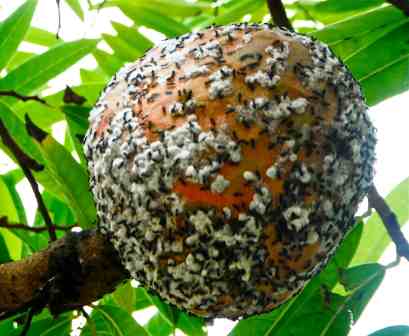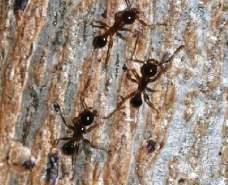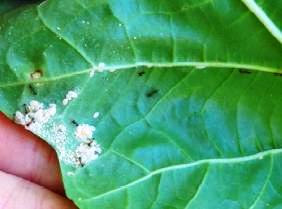An ant is more than just an ant |28 October 2013
 |
 |
 |
The big-headed ants have a mutual existence with mealy bugs and other scale insects that feed on leaves and sap and can cause plants to die
Ants are amazing creatures; there are over 12,000 kinds in the world and they have been around for over 100 million years which is why they are known as the world’s most successful species. In fact there are so many and in almost every corner of the globe that their biomass is equal to that of the entire human race. They communicate using chemicals called pheromones, sounds and touch, leaving pheromone trails to food and can even send out chemical messages to call for help when attacked. They have no lungs but breathe oxygen through holes in their exoskeleton. Most species are beneficial to the environment as they suppress pests and aerate the soil. However, there are many that are invasive species.
On Aride Island, the Island Conservation Society (ICS) currently has an important project to eradicate the big-headed Ant (Pheidolemegacephala). This is being funded with generous support from donors including the Christopher Cadbury Trust of UK. It is also hoped that local companies will also assist perhaps through CSR funding.
The big-headed ant has been quoted as one of the “world’s 100 worst invaders”. It forms a supercolony under the earth, which displaces all other ants and reduces the quantity of insects and other invertebrates, which are an important food source for birds and lizards. More importantly, the big-headed ants have a mutual existence with mealy bugs and other scale insects that feed on leaves and sap and can cause plants to die. The mealy bugs secrete honeydew, which the tending ants collect as a high-energy source and in return the ants protect the mealy bugs from predators and perform sanitation duties. Fortunately on Aride so far the problem is only on the plateau, where the mealy bugs can be seen all over the vegetation, distorting the leaves of some native trees and where a fallen young tern can be quickly engulfed by attacking ants - even ground nesting birds like the white-tailed tropicbird are sometimes covered in them. The next step will be to administer a very specific product, which targets the ants and is carried back into their colony to the heart of the infestation. This has been successfully carried out before on Cousine Island, where the ant infestation was worse than that on Aride. When the big-headed ants were significantly reduced there, their absence caused an increase in natural enemies of the mealy bugs, which in turn caused the collapse of the bug population.
The last step after eradication could be the hardest, because every person who comes to the island can be a carrier of either the big-headed ant or the yellow crazy ant. So anything that is carried to the island will have to be checked for ants as well as the rats which are watched for at the moment. Aride Island will then be monitored closely for any return of the ant infestation.
If you are planning to visit this amazing island nature reserve then be sure to check your bags for any ants that may be hiding in snacks and help to eliminate any potential threats.
Melinda Curran
Island Conservation Society




